Blogging Sax Rohmer’s The Yellow Claw – Part One
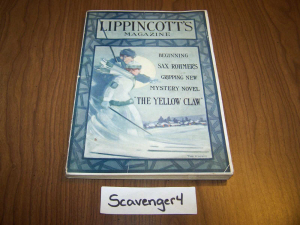
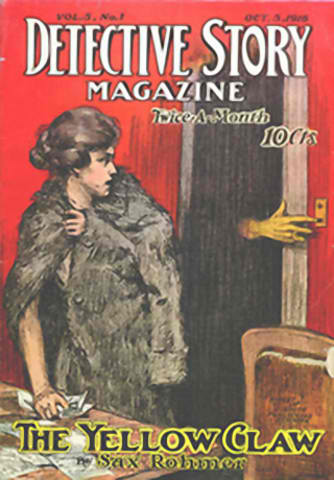 Sax Rohmer’s The Yellow Claw was originally serialized in five installments in Lippincott’s from February through June 1915. The serial was subsequently published in book form later that same year by Methuen Press in the UK and McBride & Nast in the US. The novel chooses to divide the story into four sections which is how we shall examine the title over the next four weeks.
Sax Rohmer’s The Yellow Claw was originally serialized in five installments in Lippincott’s from February through June 1915. The serial was subsequently published in book form later that same year by Methuen Press in the UK and McBride & Nast in the US. The novel chooses to divide the story into four sections which is how we shall examine the title over the next four weeks.
Rohmer’s first Yellow Peril thriller outside the Fu Manchu series is chiefly remembered today for having introduced the character of his dapper French detective, Gaston Max of the Surete. Max went on to feature in three other novels [The Golden Scorpion (1918), The Day the World Ended (1929), and Seven Sins (1943)] as well as the BBC radio series, Myself and Gaston Max adapted from a series of short stories about an entirely different Rohmer character, The Crime Magnet.
Gaston Max was highly influenced by Edgar Allan Poe’s Auguste Dupin, the series detective who did much to direct the development of the mystery genre and was a primary source of inspiration for both Sir Arthur Conan Doyle’s Sherlock Holmes and Agatha Christie’s Hercule Poirot. Max was not Rohmer’s first attempt at fashioning his own French detective after Dupin’s example. His very first novel, The Sins of Severac Bablon (1912) featured Gaston Max’s prototype, Victor Lemage. The interesting feature is that while elements of Yellow Peril thrillers will surface in the book, Rohmer was trying hard to write a more conventional and realistic detective story in a direct break from the thrillers that made his name.
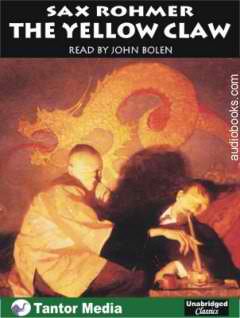
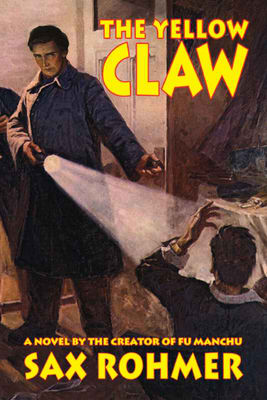 The Yellow Claw opens with Rohmer’s alter ego Henry Leroux (author of the Martin Zeda series of fantastic mysteries) being interrupted from a night’s writing efforts by the unexpected arrival of a mysterious beauty clad only in a fur coat who is fleeing from someone known only as Mr. King. Now there’s a set-up for a novel. Rohmer starts out poking fun at his own work and then fantasizes about the sort of interruption most writers would love to experience. Rohmer would even repeat the scenario for his 1950 novel, Nude in Mink.
The Yellow Claw opens with Rohmer’s alter ego Henry Leroux (author of the Martin Zeda series of fantastic mysteries) being interrupted from a night’s writing efforts by the unexpected arrival of a mysterious beauty clad only in a fur coat who is fleeing from someone known only as Mr. King. Now there’s a set-up for a novel. Rohmer starts out poking fun at his own work and then fantasizes about the sort of interruption most writers would love to experience. Rohmer would even repeat the scenario for his 1950 novel, Nude in Mink.
Years later, after the Fu Manchu series had long since eclipsed The Yellow Claw in the public consciousness, Rohmer would claim that a real-life Mr. King was the inspiration for the Devil Doctor. This was likely great copy with little connection to reality, but Rohmer’s rewriting of this incident various times from the 1930s through the 1950s saw the story take shape to the point where the myth is more important than the facts. Strangely enough, The Yellow Claw was so successful in its day that it was filmed before any of the Fu Manchu books. By 1931, Rohmer attempted to revive his mysterious Mr. King for the novel, Yu’an Hee See Laughs, but readers were largely uninterested and so within three years Mr. King had instead taken his new role as the alleged real-life counterpart to Fu Manchu for a tale that never failed to capture the interest of the press.
Back in 1915, our mysterious Mr. King was about to turn poor Henry Leroux’s world upside down just as Rohmer intended to confound his readers’ expectations. No sooner has she gained access to his study, the author’s mysterious visitor collapses in a faint. Leroux rings for the doctor next door and upon his arrival discovers the woman is dead. Rohmer then shifts the focus to Inspector Dunbar of Scotland Yard who arrives on the scene and changes the reader’s perception of the preceding events.
We quickly learn that the unknown woman was a drug addict who has been strangled. Leroux and his wife Mira are now viewed as rather scandalous bohemians and not at all respectable as all right-thinking British subjects should be. In the midst of the initial inquiry, Leroux’s butler, Soames flees his master’s house adding an additional twist for the reader and Dunbar to puzzle.
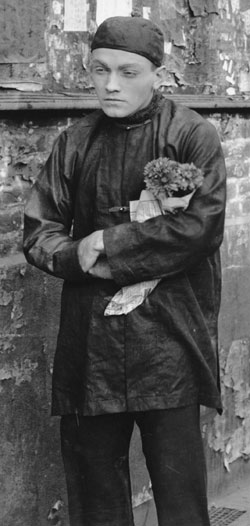
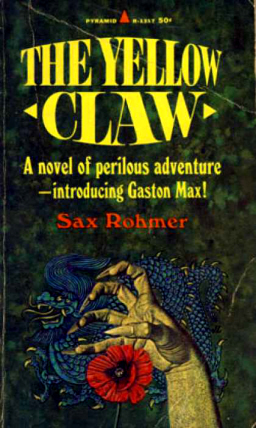 Inspector Dunbar has been seeking information on the mysterious Mr. King as well and is deeply troubled to find the growing drug problem among suburban Londoners. Dunbar blames the artistic temperament of many of the suburban set as the root of their decadence. In short order, he has identified the woman’s body and connects her to the crowd that runs with Leroux’s equally bohemian wife. The first part of the novel climaxes in the unexpected and, for Inspector Dunbar, unwelcome arrival of the famous Gaston Max of the Surete. Dunbar receives unwanted orders from the Police Commissioner to cooperate with the Frenchman on the Mr. King case as the reader is left eager to learn what light Gaston Max will shed upon the proceedings and what possible connection Mr. King has with events in Paris.
Inspector Dunbar has been seeking information on the mysterious Mr. King as well and is deeply troubled to find the growing drug problem among suburban Londoners. Dunbar blames the artistic temperament of many of the suburban set as the root of their decadence. In short order, he has identified the woman’s body and connects her to the crowd that runs with Leroux’s equally bohemian wife. The first part of the novel climaxes in the unexpected and, for Inspector Dunbar, unwelcome arrival of the famous Gaston Max of the Surete. Dunbar receives unwanted orders from the Police Commissioner to cooperate with the Frenchman on the Mr. King case as the reader is left eager to learn what light Gaston Max will shed upon the proceedings and what possible connection Mr. King has with events in Paris.
It is interesting that this first section covering over seventy pages never once reveals that Mr. King is Chinese, although his name may have led readers to suspect it. Nor is there any clue to how he strangled the beautiful woman clad only in a fur coat in Henry Leroux’s study. Rohmer has set up an intriguing mystery that titillates the reader with its strong hints of sordid drug and sex scandal among suburbanites. Proper and conventional Inspector Dunbar and the intriguing Gaston Max are clearly established as our guides as we journey to learn what the other sort get up to while the rest of us lead drab ordinary lives. It is easy to understand why the book captured the public imagination nearly a century ago for it is rooted in gossip and scandal. Human nature seems prone to find others’ dirty secrets and nasty habits fascinating. Rohmer was on his way to a winner. The unexpected twist he took the reader on next will be what we shall examine in Part Two of this article.
William Patrick Maynard was authorized to continue Sax Rohmer’s Fu Manchu thrillers beginning with The Terror of Fu Manchu (2009; Black Coat Press). A sequel, The Destiny of Fu Manchu was recently published by Black Coat Press. Also forthcoming is a collection of short stories featuring an original Edwardian detective, The Occult Case Book of Shankar Hardwicke and an original hardboiled detective novel, Lawhead. To see additional articles by William, visit his blog at SetiSays.blogspot.com
Hi, found your essays on Rohmer very helpful and have crosslinked to your site after mentioning you here: https://arche-arc.blogspot.com/2022/02/the-reading-rheum-yellow-claw-1915.html